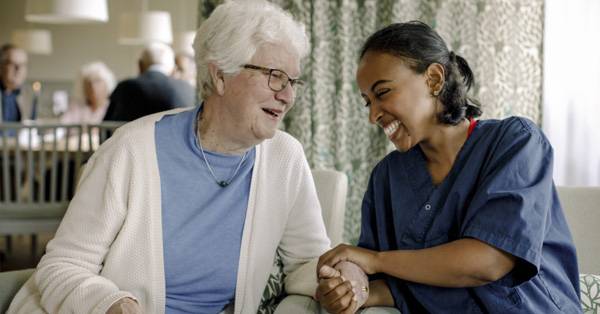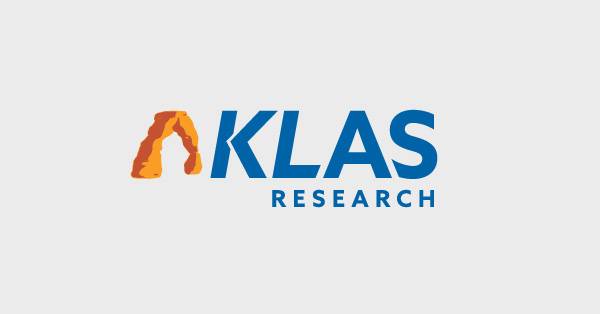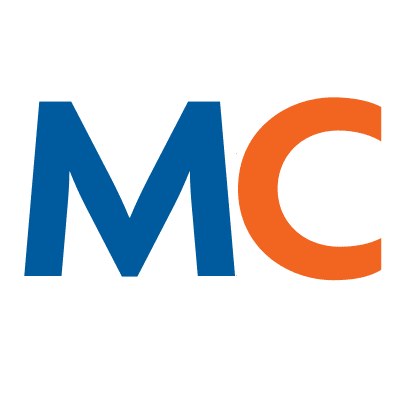- Solutions
- Solutions
- Home Health
- Hospice
- Life Plan Community
- Palliative Care
- Private Duty
- Senior Living
- Skilled Nursing
- Skilled Nursing
- Skilled Nursing Software
- Advanced Insights
- Customer relationship management
- Data and analytics
- Financial & operations management
- Marketing
- Nutrition management
- Referral management
- Regulatory compliance
- Retail management
- Resident engagement
- Revenue cycle management
- Skilled nursing interoperability
- Partners
- Blogs
- Resources
- About
- User Conference

Reimbursement news: Key takeaways from the CY 2025 Home Health Proposed Rule
On June 26, 2024, the Centers for Medicare and Medicaid Services (CMS) released the Calendar Year (CY) 2025 Home Health Prospective Payment System Proposed Rule (CMS-1803-P), along with a Fact Sheet.
In this blog, we highlight key takeaways from this proposed rule to help home health agencies (HHAs) prepare for the changes and challenges ahead.
Payment cuts continue
The CY 2025 updated rates include the proposed CY 2025 home health payment update of 2.5% ($415 million increase), which is offset by an estimated 3.6% decrease required by statute. This reflects the proposed permanent behavior adjustment (-4.067%; $595 million decrease) and an estimated 0.6% decrease that reflects a proposed FDL ($100 million decrease). CMS estimates that Medicare payments to HHAs in CY 2025 would decrease in the aggregate by 1.7%, or $280 million, with the national base rate decreasing from $2,038.13 in CY 2024, to $2,008.12 in CY 2025 — if finalized as proposed.
With continued rising costs for labor, transportation and supplies, significant staffing shortages, shrinking service areas, decreasing capacity for home health admissions nationwide, and other ongoing and lingering operational challenges related to the lengthy COVID-19 public health emergency, the immediate concern is that many HHAs across the country will not be able to withstand the impacts of another rate cut, which will continue to impact access for Medicare beneficiaries.
No resolution around the behavioral adjustment methodology
Significant concerns continue to be raised by industry organizations, home health providers and other stakeholders regarding the accuracy and validity of CMS’ forecasting methodology and resulting analysis of the impact of the Patient Driven Groupings Model (PDGM) — which has resulted in an additional proposed permanent rate reduction of -4.067% ($595 million). The industry also anticipates further financial instability and severe economic impacts to HHAs to be imposed in the near future, related to additional temporary payment adjustments estimated by CMS to be $4,455,407,087 in excess payments across CYs 2020 through 2023.
National trends in HHA closures, service area reductions, and referral rejections continue to be observed, heightening the concerns that these continued budget neutrality adjustments will have direct and permanent effects on the access to care. State and national home health associations, home health providers, Medicare beneficiaries, and other interested stakeholders continue to look to Congress to pass legislation introduced last year (The Preserving Access to Home Health Act of 2023; H.R. 5159, H.R. 5128, S.2137) to eliminate the permanent and temporary adjustment authority and require MedPac to expand its analysis of HHA financial status to include all payors.
Proposed COP changes fail to address resource issues
CMS is proposing updates to the Conditions of Participation (COPs) in what the agency describes as an attempt to improve transparency around HHAs’ ability and capacity to admit. These updates include adding a new standard that would require HHAs to develop, implement, and maintain an acceptance to service policy that is applied consistently to each prospective patient referred for home health care. A new standard would also require HHAs to make public accurate information regarding the services offered and any limitations the HHA has in their capacity to admit related to the types of specialty services, service area, service duration or service frequency.
While CMS acknowledges in this proposed rule that current staffing shortages in HHAs may have impacts on their ability to accept referrals, admit referred patients timely, and/or meet the needs of patients effectively, CMS continues to impose payment cuts and increased documentation burden. Meanwhile, home health operational costs continue to increase, significant staffing shortages continue, and HHAs remain challenged to rebound from the impacts of a long and taxing public health emergency — further resulting in decreased service areas, and decreased acceptance of patient referrals.
Many industry organizations and HHAs understand the reason CMS is proposing detailed acceptance to service policies and more transparency regarding HHAs’ capacity to admit is that referral sources and patients are having difficulties locating appropriate HHAs to meet their service needs or in certain geographic areas. The concern in the industry, however, is that CMS does not recognize the core issue is a resource problem and not a referral process problem.
Additionally, many industry organizations and HHAs believe that having more detailed policies in place and greater transparency into capacity to serve may be helpful information for referral sources and patients. But it will not resolve the ongoing capacity issues that HHAs are experiencing, as rates continue to be cut and costs continue to increase amid an unprecedented workforce shortage with no end in sight.
Health equity across care settings will be a focus in these new CMS guidelines
The proposals to add the four new cross-setting Standardized Patient Assessment Data Elements (SPADES) in the SDOH category to the OASIS, and to modify the existing Transportation item (A1250) in OASIS, are generally perceived as positive for the home health industry and a step in the right direction toward collecting data. These proposals could help evaluate the risk for adverse social conditions that could negatively impact a patient’s health or health care and identify opportunities to connect the patient and family to community support and programs.
As CMS continues to work toward collecting these SDOH data elements and determining which SDOH domains align across post-acute care (PAC) — including hospice — the use of standardized screening tools, embedded within the PAC instruments (i.e., OASIS), will also be a critical step to help ensure consistent and accurate screening and timely intervention.
Responding to RFIs will be important for HHAs
Included in this proposed rule were the following requests for information (RFIs) designed by CMS to help solicit comments and insights on specific topics from providers:
- RFI on future performance measure concepts for the expanded Home Health Value-Based Purchasing (HHVBP) Model
- CMS is requesting public comments on several specific performance measures as well as general comments on other future model concepts that may be considered for inclusion on the expanded HHVBP Model.
- RFI regarding rehabilitative therapists conducting the initial and comprehensive assessment
- Given recent input from stakeholders, including therapy professional organizations, CMS is seeking public comments regarding whether CMS should shift its longstanding policy and permit all classes of rehabilitative therapists (PTs, SLPs and OTs) to conduct the initial assessment and comprehensive assessment for cases that have both therapy and nursing services ordered as part of the plan of care.
- RFI on plan of care development and scope of services home health patients receive
- In an effort to improve the HHA referral process, ensure the timely delivery of home health care, and ensure that home health care is delivered in a manner that meets patient needs and achieves the measurable outcomes and goals set forth in each patient’s individualized plan of care, CMS is requesting public comments on policies related to these goals.
It will be important for HHAs across the nation to review and respond to these RFIs in an effort to better inform CMS on factors that influence the provision of services and impact their ability to accept and admit referrals in a timely manner.
Request a demo today for a closer look at MatrixCare.
Brandy Shifteh
Brandy Shifteh, RN, BHSA, MBA, joined MatrixCare in April of 2018 as a Clinical Informatics Business Analyst, where she has been very involved in the development and enhancement of clinical analytics that supports scrubbing of OASIS assessment data, casemix/HIPPS scoring, clinical assessment reviews and coding. In April of 2019, she transitioned into a Regulations Compliance role, where she is responsible for monitoring regulations that impact home health, hospice and private duty home care, to help ensure our solutions support all existing and new regulations. She is very plugged into the regulatory community with relationships at both the state and federal level and serves as an active member on the National Government Services (NGS) Vendor Coalition group, where she provides input on MAC provider education and materials. Brandy is a Registered Nurse and comes to us with over 23 years of operations management experience in the home health, hospice and private duty home care sector, inclusive of accreditation/survey preparedness, compliance and clinical/quality improvement programming. She holds two undergraduate degrees; science and nursing and health services administration; and an MBA in computer information systems (CIS).
Related Posts



See MatrixCare in action
Start by having a call with one of our experts to see our platform in action.
MatrixCare offers industry-leading software solutions. Thousands of facility-based and home-based care organizations trust us to help them improve efficiency and provide exceptional care.
© 2025 MatrixCare is a registered trademark of MatrixCare. All rights reserved.





